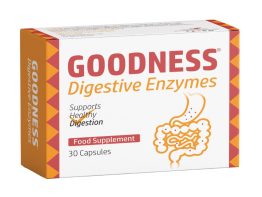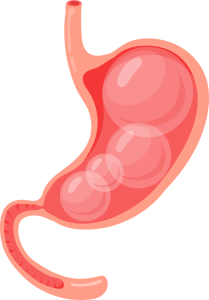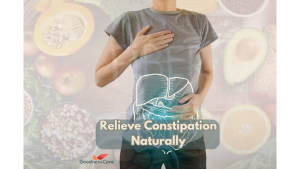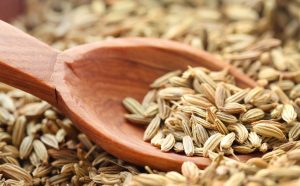The human digestive system is home to trillions of bacteria, collectively known as the gut microbiota. These bacteria are essential in digestion, immune function, and overall health. One of their primary functions is the fermentation of undigested food that reaches the large intestine. While fermentation is a natural and necessary process, it can sometimes lead to digestive issues like bloating, gas, abdominal discomfort, and irregular bowel movements.
We’ll explore how gut bacteria ferment food, why this can cause digestive problems for some people, and how certain dietary and lifestyle changes can help manage these issues.
What is Fermentation in the Gut?
Fermentation is the process by which gut bacteria break down undigested carbohydrates, fibers, and other substances that the body cannot fully digest in the small intestine. This process primarily occurs in the colon, where bacteria feed on these substances and produce gases like hydrogen, methane, and carbon dioxide as byproducts. Additionally, fermentation can produce short-chain fatty acids (SCFAs), which are beneficial for gut health and have anti-inflammatory properties.
While fermentation is important to maintaining gut health and energy balance, it can sometimes cause uncomfortable digestive symptoms when the process goes awry or is overly intense.
Why Does Fermentation Lead to Digestive Issues?
Several factors can cause fermentation to lead to digestive problems, including the type of food being fermented, the balance of bacteria in the gut, and how efficiently the digestive system processes certain substances. Here are some key reasons why fermentation can cause digestive issues:
1. Excessive Gas Production
Excessive gas production is one of the most common and uncomfortable results of the fermentation process of gut bacteria. Normally, gas production in the digestive system is a natural part of digestion, as gut bacteria break down food components not fully digested by the small intestine. In a healthy gut, the amount of gas produced is usually minimal and is absorbed into the bloodstream or released through flatulence or burping without causing significant discomfort. However, when larger-than-normal amounts of fermentable carbohydrates—such as fibers, sugars, and resistant starches—reach the colon, the fermentation process can go into overdrive, producing excessive gas.
This gas buildup can result from the digestion of high-FODMAP foods, which are notorious for being poorly absorbed in the small intestine. When these foods reach the large intestine, gut bacteria ferment them, producing gases like hydrogen, methane, and carbon dioxide. These gases accumulate in the intestines, leading to uncomfortable symptoms like bloating, flatulence, and abdominal distension.
The type of gas produced during fermentation is key in affecting digestive health. For instance, methane is a gas produced by specific types of gut bacteria known as methanogens. Methane uniquely impacts the digestive system because it is associated with slower intestinal transit times, which can lead to constipation. The presence of methane in the gut often results in fewer, harder bowel movements, and those who produce more methane typically experience more sluggish digestion.
On the other hand, hydrogen is another common gas produced during fermentation, especially when undigested sugars and carbohydrates are fermented. Hydrogen is more frequently linked to diarrhea and bloating. When hydrogen production is elevated, the gut becomes more distended, leading to uncomfortable bloating. In addition, excess hydrogen can result in faster transit times, contributing to loose or frequent stools.
Furthermore, hydrogen can also be converted into hydrogen sulfide, another gas known for causing foul-smelling flatulence. Though produced in smaller amounts, hydrogen sulfide can exacerbate digestive discomfort and add to the sensation of fullness or bloating in the abdomen.
When large amounts of gas accumulate, the intestines expand, causing the bloating sensation many people experience after eating certain foods. This expansion also triggers abdominal pain for some individuals, as the gas stretches the intestinal walls. This gas pressure can also cause an increase in flatulence as the body attempts to expel the excess gas.
2. Bloating and Distention
Bloating is a common digestive complaint when the abdomen feels full, tight, or visibly swollen. A feeling of heaviness or pressure in the abdominal region often accompanies this discomfort. In some cases, the bloating can be so severe that it leads to distention—a noticeable and sometimes painful expansion of the abdomen. Bloating and distention are primarily caused by the buildup of gas in the intestines, produced during the fermentation process of gut bacteria.
When food is not fully digested in the small intestine, it passes into the colon, where bacteria ferment it, breaking it down into simpler components. This fermentation produces gases such as hydrogen, methane, and carbon dioxide as byproducts. Normally, the body can absorb or release small amounts of gas without discomfort. However, fermentation producing excess gas can lead to uncomfortable bloating and distention.
The digestive system’s ability to handle gas production and expel it efficiently varies significantly from person to person. Some individuals are more sensitive to gas buildup or may have a reduced ability to absorb or release gas, which causes it to accumulate in the intestines. This gas buildup stretches the walls of the intestines, leading to feelings of tightness and visible distention. The expansion of the intestines also triggers nerve endings in the gut, which can result in discomfort or even pain for some people.
One key dietary factor contributing to bloating and distention is consuming high-FODMAP foods. These foods contain fermentable carbohydrates, including Oligosaccharides, Disaccharides, Monosaccharides, and Polyols, which are notorious for being poorly absorbed in the small intestine. High-FODMAP foods include wheat, onions, garlic, beans, lentils, dairy products, certain fruits (like apples and pears), and sugar alcohols (such as sorbitol and mannitol).
The poor absorption of FODMAPs occurs because the small intestine lacks the enzymes or transport mechanisms needed to break down or absorb these carbohydrates fully. Instead of being absorbed, these undigested carbohydrates travel to the large intestine, where gut bacteria ferment them, producing large amounts of gas. The gas produced from the fermentation of FODMAPs tends to accumulate more easily in people with sensitive digestive systems, causing bloating, distention, and, sometimes, abdominal pain.
In addition to the type of food consumed, several factors influence whether bloating and distention occur, including:
- Gut Microbiota Composition: The types of bacteria present in the gut play a significant role in fermentation. Some people may have a gut microbiome that produces more gas than others, leading to increased bloating after consuming fermentable carbohydrates.
- Gastrointestinal Motility: How food and gas move through the digestive system affects bloating. Slow motility can cause gas to build up and remain in the intestines longer, exacerbating bloating and distention. Conversely, rapid motility can result in gas moving through the system too quickly, leading to discomfort and diarrhea.
- Sensitivity of the Gut: Some people are heightenedly sensitive to the stretching of the intestinal walls caused by gas buildup. Even small amounts of gas can trigger bloating, distention, and abdominal discomfort in these individuals.
- Posture and Physical Activity: Physical activity and posture influence how well the body expels gas. Lying down after a meal may prevent gas from moving efficiently through the intestines, leading to more significant gas buildup and bloating.
3. Diarrhea
Diarrhea is one of the more distressing symptoms caused by improper digestion and excessive fermentation in the gut. It occurs when unabsorbed carbohydrates, sugars, and other fermentable substances draw water into the intestines, creating loose or watery stools. The mechanism behind diarrhea in cases of fermentation is primarily an osmotic effect. This process involves water being pulled into the colon due to an imbalance in the concentration of solutes such as sugars.
The Role of Osmosis in Diarrhea
Osmosis is a natural process in which water moves across a membrane (in this case, the intestinal walls) from an area of lower solute concentration to an area of higher solute concentration. When certain carbohydrates and sugars are not properly absorbed in the small intestine, they remain in the digestive tract as unabsorbed solutes. These solutes create a high concentration of undigested material in the colon, which draws water from surrounding tissues into the intestinal lumen to balance the concentration.
This influx of water softens the stool and can lead to diarrhea, especially when the volume of water entering the intestines overwhelms the colon’s ability to absorb it. This process is particularly common in people with carbohydrate malabsorption, such as lactose intolerance or fructose malabsorption, where certain sugars pass through the small intestine without being properly digested or absorbed.
How Fermentation Contributes to Diarrhea
Fermentation of unabsorbed carbohydrates by gut bacteria compounds the osmotic effect. When these carbohydrates reach the colon, gut bacteria ferment them, breaking them into simpler substances such as gases (hydrogen, methane, carbon dioxide) and short-chain fatty acids (SCFAs). While SCFAs are generally beneficial for gut health, their production during excessive fermentation can create an environment that attracts even more water into the intestines. This additional water contributes to the liquidity of stools and accelerates intestinal transit, leading to diarrhea.
Common Carbohydrates and Sugars That Trigger Diarrhea
Several specific types of carbohydrates are notorious for causing osmotic diarrhea when they are not properly absorbed in the small intestine. Some of the most common culprits include:
- Lactose: Lactose is the sugar found in milk and other dairy products. In individuals with lactose intolerance, the body lacks sufficient lactase, the enzyme required to break down lactose into its component sugars (glucose and galactose) for absorption. When lactose is not fully digested in the small intestine, it passes into the colon, where it undergoes fermentation, producing gas and attracting water, which results in diarrhea. This condition is common, especially among certain populations, and can lead to significant digestive discomfort when dairy products are consumed.
- Fructose: Fructose is a naturally occurring sugar found in fruits, honey, and some vegetables. It is also added to many processed foods and beverages, such as high-fructose corn syrup. The small intestine cannot efficiently absorb this sugar in individuals with fructose malabsorption. Unabsorbed fructose moves into the colon, where gut bacteria ferment it, producing gases and attracting water. The osmotic effect of unabsorbed fructose combined with fermentation leads to loose, watery stools. Fructose malabsorption is a common cause of diarrhea and other digestive symptoms in adults and children.
- Polyols (Sugar Alcohols): Polyols, also known as sugar alcohols, are often used as low-calorie sweeteners in sugar-free products like candy, gum, and certain processed foods. Examples of polyols include sorbitol, mannitol, xylitol, and erythritol. These compounds are not fully absorbed in the small intestine, and like fructose, they attract water into the colon and undergo fermentation by gut bacteria. The combined osmotic effect and fermentation process can lead to significant gastrointestinal symptoms, including diarrhea. For individuals sensitive to polyols, even small amounts can trigger diarrhea.
- Other FODMAPs: Fermentable Oligosaccharides, Disaccharides, Monosaccharides, and Polyols (FODMAPs) are a group of poorly absorbed carbohydrates that are common triggers for diarrhea in sensitive individuals. In addition to lactose, fructose, and polyols, other FODMAPs include fructans (found in wheat, onions, and garlic) and galacto-oligosaccharides (GOS) (found in beans and legumes). These carbohydrates resist digestion in the small intestine and are fermented in the colon, producing gas and drawing water, leading to diarrhea.
Diarrhea in Lactose Intolerance and Fructose Malabsorption
Diarrhea occurs in individuals with lactose intolerance and fructose malabsorption because the body is unable to digest and absorb these sugars properly. In lactose intolerance, the lack of lactase prevents lactose from breaking down, so it passes into the colon. Bacteria ferment it and produce gases such as hydrogen and methane, along with SCFAs. The resulting osmotic effect draws water into the colon, causing diarrhea.
Similarly, in fructose malabsorption, unabsorbed fructose reaches the colon, where it undergoes fermentation. The fermentation process leads to the production of gases and the osmotic attraction of water, resulting in loose stools. The higher the fructose content in the food consumed, the more likely the individual is to experience diarrhea and other digestive symptoms.
Managing Diarrhea Caused by Fermentation
Managing diarrhea caused by fermentation involves addressing both the overproduction of gas and the osmotic imbalance that draws water into the intestines, which leads to loose stools. One of the most effective ways to manage these symptoms is through dietary changes, particularly by reducing the intake of fermentable carbohydrates such as lactose, fructose, and high-FODMAP foods. For individuals with lactose intolerance, switching to lactose-free dairy products or using lactase supplements can prevent undigested lactose from reaching the colon and causing fermentation. Similarly, limiting high-fructose foods like apples and high-fructose corn syrup can reduce symptoms for those with fructose malabsorption. The low-FODMAP diet is often recommended for individuals with irritable bowel syndrome (IBS) to minimize the intake of fermentable carbohydrates. Digestive enzyme supplements, such as lactase and alpha-galactosidase, can further enhance the breakdown and absorption of troublesome carbohydrates, preventing them from fermenting in the colon. Probiotics, which contain beneficial bacteria, also support gut health by balancing the microbiota, reducing gas production, and alleviating diarrhea caused by fermentation while helping to restore a healthy gut environment after episodes of diarrhea.
4. Constipation
Fermentation, a common digestive issue, can exacerbate constipation, particularly when methane-producing bacteria play a significant role in the gut’s microbiota. Methane is a gas produced by specific gut bacteria known as methanogens, found primarily in the large intestine. Unlike other gases like hydrogen and carbon dioxide, methane has a unique effect on the digestive system, particularly on intestinal transit time—the rate at which food and waste move through the digestive tract.
Research suggests that methane slows food movement through the intestines, making bowel movements less frequent and difficult to pass. This slowdown results in harder stools, increased straining during defecation, and a general feeling of fullness and discomfort. Methane-induced constipation can also lead to other symptoms, such as bloating and abdominal pain, as waste and gas accumulate in the intestines. The slowdown in transit time caused by methane reduces the efficiency of normal peristalsis (the wave-like muscle contractions that move food through the intestines), causing stools to dry out and harden, contributing to difficulty passing them.
Individuals with an overgrowth of methane-producing bacteria, particularly those with small intestinal bacterial overgrowth (SIBO), are at a higher risk of experiencing constipation. SIBO occurs when bacteria, including methanogens, normally found in the large intestine, migrate to the small intestine. In this scenario, methane production can interfere with normal digestive function earlier in the digestive process, slowing transit through the small and large intestines.
Constipation associated with methane production is often seen in methane-dominant SIBO (as opposed to hydrogen-dominant SIBO, typically associated with diarrhea). In such cases, methane’s impact on gut motility becomes a significant factor, contributing to chronic constipation, bloating, and discomfort. This condition can be particularly difficult to manage because methane production slows transit time and creates a feedback loop—slower digestion leads to increased fermentation, producing more methane and exacerbating constipation further.
Addressing the underlying bacterial overgrowth and slowed gut motility is essential to managing constipation linked to fermentation and methane production. Treatments often involve using antibiotics or herbal antimicrobials to reduce bacterial overgrowth, dietary changes, and digestive aids to promote more regular bowel movements. Increasing fiber intake can help some individuals, though those with SIBO or methane-dominant fermentation may need to be cautious with high-fiber foods that can further fuel fermentation.
5. Abdominal Pain and Cramping
Abdominal pain and cramping are common symptoms of digestive distress, often caused by the buildup of gas and the movement of undigested food through the intestines. These symptoms arise from mechanical and chemical factors within the digestive tract, primarily involving the expansion of the intestines due to gas or stool. This expansion stretches the walls of the intestines, stimulating nerve endings in the gut, which results in discomfort or pain. Depending on the severity and cause, the pain may be experienced as sharp, stabbing sensations or dull, lingering discomfort. This pain can occur intermittently, in waves, or persist for extended periods, depending on the individual’s condition.
The fermentation of undigested carbohydrates and other food components by gut bacteria significantly contributes to gas buildup. As gut bacteria break down these substances, they release gases such as hydrogen, methane, and carbon dioxide. While small amounts of gas are normal and typically expelled without causing pain, excess gas can stretch the intestines and trigger abdominal pain and cramping. The intestines are lined with a vast network of nerves known as the enteric nervous system, which is highly sensitive to mechanical pressure and distension. When excess gas accumulates, it increases the pressure inside the intestines, causing these nerves to send pain signals to the brain.
Additionally, the movement of undigested food through the intestines can stimulate pain receptors, especially in individuals with underlying digestive conditions. The peristaltic movement (the rhythmic contraction of intestinal muscles to move food along) can cause cramping as the body attempts to move partially digested or poorly absorbed food through the digestive tract. This process can be further complicated by gut motility issues, where either slow or irregular movements of the intestines exacerbate the buildup of gas and stool, leading to more pronounced cramping.
In individuals with conditions like irritable bowel syndrome (IBS), fermentation and gas production can significantly worsen symptoms of abdominal pain and cramping. IBS is characterized by heightened gut sensitivity, often called visceral hypersensitivity, which means the nerves in the gut overreact to stimuli that would not typically cause pain in a healthy individual. For example, small amounts of gas that someone without IBS might tolerate can lead to intense cramping and pain in someone with the condition. The fermentation of poorly absorbed carbohydrates, such as those found in high-FODMAP foods, increases gas production, which stretches the intestinal walls and exacerbates this hypersensitivity. This is why individuals with IBS often report worsening symptoms after consuming foods rich in fermentable carbohydrates.
Moreover, gas-induced bloating can aggravate the pain and cramping experienced by IBS patients. The distension caused by gas increases the pressure within the abdominal cavity, stimulating the already sensitized nerve endings in the gut lining. The pain can vary in location and intensity, often shifting across different parts of the abdomen depending on where the gas is trapped or where undigested food is moving through the intestines.
In some cases, abdominal pain and cramping may also result from gut spasms, where the muscles of the intestines contract forcefully and irregularly in response to the accumulation of gas or poorly digested food. These spasms can lead to sharp, intermittent cramping, especially after meals with difficult-to-digest foods.
Managing abdominal pain and cramping typically involves addressing the underlying causes of gas buildup and fermentation. Dietary changes, such as adopting a low-FODMAP diet, can help reduce the intake of fermentable carbohydrates that contribute to excess gas production. Additionally, using digestive enzyme supplements can support the breakdown of problematic foods, preventing them from fermenting in the colon and reducing gas production. Medications or supplements that reduce gut sensitivity, promote motility, or relax the intestinal muscles may also help alleviate cramping and discomfort.
Foods That Contribute to Excess Fermentation
Certain foods are more likely to contribute to excess gut fermentation, especially those high in fermentable carbohydrates. These foods are often called “high-FODMAP” foods because they contain carbohydrates that are not fully absorbed in the small intestine. Here are some common examples:
- Fructose: Found in fruits like apples, pears, and mangoes, as well as honey and high-fructose corn syrup.
- Lactose: A sugar found in dairy products such as milk, cheese, and yogurt.
- Fructans: Present in foods like wheat, onions, garlic, and leeks.
- Galacto-oligosaccharides (GOS): Found in legumes like beans, lentils, and chickpeas.
- Polyols: Sugar alcohols are found in stone fruits (such as cherries and plums), artificial sweeteners, and some vegetables like cauliflower.
When these foods are not properly digested in the small intestine, bacteria in the large intestine ferment them, producing gas and other digestive issues.
Managing Digestive Issues Caused by Fermentation
Managing fermentation-related digestive issues involves making dietary changes, improving gut health, and using digestive enzymes or probiotics when appropriate. Here are some strategies to manage the symptoms associated with fermentation:
1. Low-FODMAP Diet
For individuals particularly sensitive to fermentable carbohydrates, following a low-FODMAP diet can be helpful. This diet involves temporarily reducing the intake of high-FODMAP foods (such as those mentioned earlier) and gradually reintroducing them to identify which foods trigger symptoms.
A low-FODMAP diet effectively manages symptoms of symptoms of irritable bowel syndrome (IBS)and other functional digestive disorders related to fermentation.
2. Digestive Enzymes
Digestive enzymes can help improve the digestion of carbohydrates prone to fermentation. Enzymes such as alpha-galactosidase (which breaks down oligosaccharides in beans and legumes), lactase (which breaks down lactose), and amylase (which breaks down starches) can reduce the amount of undigested material that reaches the colon.
By enhancing the digestion of problematic carbohydrates, digestive enzymes can help prevent fermentation and the associated symptoms.
3. Probiotics
Probiotics are beneficial bacteria that help balance the gut microbiota and improve digestion. Certain probiotic strains, such as Bifidobacterium and Lactobacillus, have been shown to reduce gas production and improve symptoms of bloating and diarrhea.
Taking a probiotic supplement or consuming probiotic-rich foods like yogurt, kefir, or fermented vegetables may help reduce fermentation-related digestive issues.
4. Fiber Modification
Increasing fiber intake may help improve bowel regularity for individuals with fermentation-related constipation. However, for those who experience bloating and gas, reducing the intake of certain types of fiber (such as insoluble fiber) and opting for soluble fiber (like that found in oats and flaxseeds) may be more effective in managing symptoms.
Conclusion
Food fermentation by gut bacteria is a natural and essential process for maintaining a healthy digestive system. However, when fermentation becomes excessive or imbalanced, it can lead to uncomfortable digestive issues such as bloating, gas, diarrhea, constipation, and abdominal pain.
Understanding how fermentation works and identifying the foods that contribute to excess fermentation can help individuals manage their symptoms. Dietary adjustments, digestive enzymes, probiotics, and fiber modification can all help reduce the digestive issues caused by fermentation, improving overall gut health and quality of life.
-
Product on sale
 Goodness Digestive EnzymesOriginal price was: $ 29.95.$ 25.95Current price is: $ 25.95.
Goodness Digestive EnzymesOriginal price was: $ 29.95.$ 25.95Current price is: $ 25.95.






